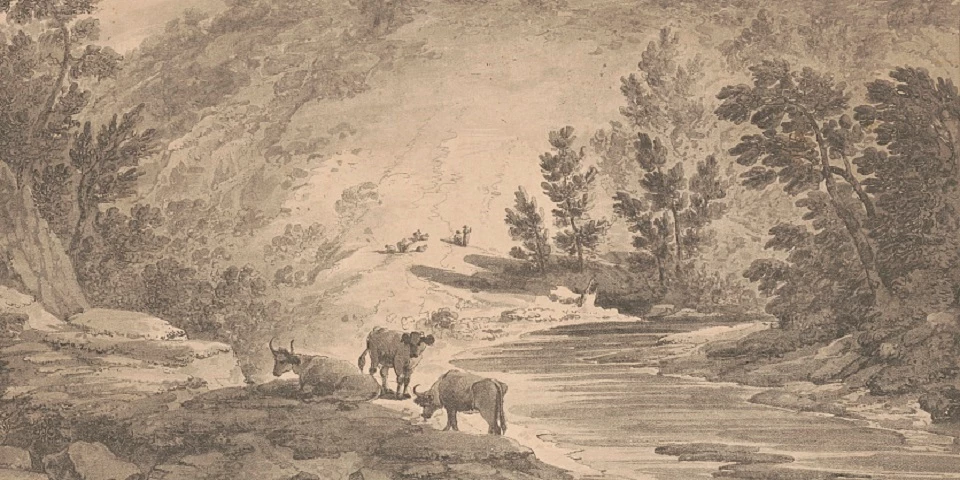Philadelphia was called the “Athens of America”
Article
Poe's Philadelphia

Library of Congress
A city of artisans, merchants, church steeples, graceful public buildings, and tidy rowhouses, Philadelphia was called the “Athens of America” by Gilbert Stuart, the famous portraitist. It was a city which could offer much to a talented man like Edgar Allan Poe. But by the time Poe arrived in 1838, it was also a city in transition.
Philadelphia began to experience changes caused by the industrial revolution. Textile factories, machine shops, iron works, and sugar refineries made Philadelphia the nation’s manufacturing center. Canals transported coal from the state’s interior to fuel the city’s factories. Men, women, and children worked from dawn to dusk, six days a week, bringing home wages from $2 to $4 a week depending on gender and age.
The increase in manufacturing attracted large numbers of immigrants, many from Ireland. They were desperately poor and willing to work for lower wages, which put them in competition with Philadelphia’s free African-American community as it became increasingly barred from economic opportunities. The intense competition for jobs, coupled with abolitionist activities, led to racial riots in 1838 and 1842.
Anti-Catholic and anti-foreigner sentiment also exploded into riots in the spring and summer of 1844. St. Michael’s Catholic Church, the Female Seminary of the Sisters of Charity, and St. Augustine’s Church were burned during the riots. The riots tarnished the city’s once proud reputation for religious tolerance.
During his 1842 tour of the United States, the popular British author Charles Dickens visited Philadelphia. Poe met with Dickens at the United States Hotel located on Chestnut Street, where the two men discussed literature and particularly the need for an international copyright law to protect the works and rights of all authors.
Poe's work did not go unnoticed during his time in Philadelphia. The Walnut Street Theatre produced a short play based on Poe's popular mystery story, "The Gold Bug," and Poe spoke to large crowds several times regarding the poetry of America. He found a picturesque escape from the city by walking along the scenic Wissahickon Creek, which he wrote about in a short article entitled "Morning on the Wissahickon."
Last updated: November 2, 2017
